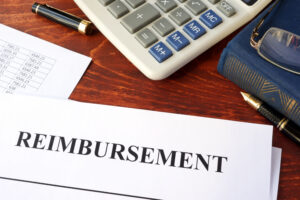Tax Relief Courtesy of Hurricane Harvey

While Hurricane Harvey continues to devastate the Gulf Coast, Texans can expect to receive a little extra relief this upcoming tax year from Uncle Sam. Taxpayers in the federally declared disaster area have the option of claiming disaster-related casualty losses for either the year that the event occurred or the year prior. This means that those whose homes were affected by wind or flood damage can deduct the damages from either this year or the last year’s tax returns. In many cases, amending last year’s returns results in an immediate tax refund which can be then used to live on or begin repairs. However, the option of amending last year’s return may not be for everyone since the IRS does have two rules that must be followed for casualty claims. The first is that the amount of damage claimed must first be deducted by $100. Then the total casualty losses must be reduced by 10% of your adjusted gross income. If you qualify for writing off a loss the process is fairly simple. First, you will need the proper forms. These are the long Form 1040, Form 4684 to determine and report your casualty loss and Schedule A to itemize your loss deduction. If you are planning on amending your 2016 return you will need to use Form 1040X instead of the long Form 1040. You will then need to determine how the damages incurred have affected your property’s fair market value. This is done through determining how much your property is worth immediately prior to the disaster and comparing it to what it is worth immediately after the disaster. The latter part of this will need to be through a professional appraiser. The difference between these two amounts is your loss from casualty. You can then utilize Form 4684 to determine the deductible amount of your casualty loss.
If you have insurance on your property you must first file a claim to use the damage as a casualty loss. Any money that you receive from the insurance company must then be deducted from the casualty loss amount. All insurance payments must be used to repair, or replace your property or any excess could be counted as a taxable gain to you.
Throughout all of this remember to keep documentation of everything! While the IRS may give disaster victims some leeway, they do require that casualty losses be substantiated and supported. This will also be of great value to you if you ever get audited in the future.
Consult with your tax advisor to determine which option would be best for you and your family.
For more on how to claim your casualty losses (click here).
Persistence – Use Good Judgment
Persistence – Use Good Judgment Nothing in the world can take the place of Persistence. Talent will not; nothing is more common than unsuccessful men with talent. Genius will not; unrewarded genius is almost a proverb. Education will not; the world is full of educated derelicts. Persistence and determination alone are omnipotent. The slogan “Press…
Feeding a Dream
Feeding a Dream Taking Tex-Mex to Bangalore by Elizabeth Bowden-David Christopher Columbus, as the story goes, pursued a dream of India and landed on American shores. I, too, set out on a journey to India, but my dream was launched from American shores. Eight years ago, I moved with my Indian-born husband from California to…
Increase Employee Compensation for Work-Related Expenses
Increase Employee Compensation for Work-Related Expenses The California Supreme Court recently tested the boundaries of Labor Code section 2802, ruling that employers may increase employee compensation by a fixed amount instead of reimbursing employees for work-related expenses. California Labor Code section 2802 requires employers to indemnify (reimburse) employees for all necessary expenses incurred as a…
Motivating Employees Through Today’s Economic Crisis – Executive Strategies
Are you motivating employees through today’s economic crisis, you will find some executive strategies below helpful. Tough Times Call for Tough Measures, Rallying the Troops, Circling the Wagons, Bunkering Down may all seem like maxed-out maxims in today’s ailing economy, but what other rallying cries can today’s executives call on? As layoffs and cutbacks ravage…




